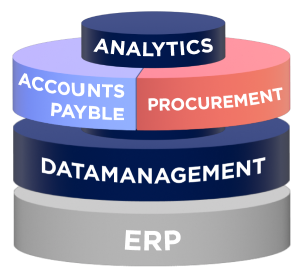2 min read
Discover hidden costs in the scan and capture process
Berjan van den Broek
Apr 14, 2021 9:06:55 AM
The recognition rate of invoices can be likened to tyre pressure: you can’t immediately see when it’s too low and you don’t really notice that there’s a problem at first.
Staying with the car analogy: if the tyre pressure is too low, it not only has a negative impact on the vehicle’s road handling and braking distance, but also leads to higher fuel consumption and therefore higher costs – yet it is rarely top of mind for car owners. That’s probably because the incorrect tyre pressure is not visible to the naked eye and the effects on the car’s performance are barely noticeable.
A similar thing holds true for the scan and capture process. The recognition rate and data quality can’t be seen with the naked eye, so people are often unaware that the levels are lower than they should be. They tend to think ‘It works, so things must be OK, right?’.
But if you improve the recognition rate, you can actually shorten the average throughput time for an invoice. Less manual work is involved, which reduces the average handling costs per invoice. Besides that, faster processing improves supplier satisfaction because they get paid sooner.
Dashboard
Because people generally don’t check their tyre pressure regularly, many cars are fitted with a pressure sensor. If drivers see a warning light on their dashboard, it’s clear that they need to take action. Along the same kind of lines, ICreative has now developed a ‘recognition sensor’ which indicates when the recognition rate for invoices is too low.
However, things like the recognition rate, data quality and throughput time are more difficult to measure than tyre pressure because the data needed to monitor the recognition rate does not come directly out of the system itself. Instead, relevant data about the process has to be gathered and combined first.
Identifying causes
The data enables you to identify which supplier(s) are holding back the recognition rate so that you can then investigate the underlying causes. In other words, human interpretation is required to find out the exact reasons why. Only then can you decide what measures to take.
For example, the low recognition rate might be caused by the fact that a certain supplier has changed the layout of their invoices. In that case, the question is: what has been changed? Are certain values that should be automatically recognized now in a different place on the order or invoice, or have the values been given new names?
Problems with master data
Another very common cause is that a supplier forgets to inform you of changes, such as when switching to a different bank. In supplier recognition, customers often make use of master data to verify whether the recognized values on the supplier’s invoice – such as bank account number and VAT number – are valid.
If a supplier switches to a different bank without informing you, the new bank number on the invoice will no longer match with the supplier’s master data. This will lead to a lower recognition rate for that supplier.
Thanks to ICreative’s IRS recognition report, these kinds of issues can be identified quickly. It provides insight into which parts of the process still offer room for improvement, plus it directly indicates where to look for possible solutions. But unfortunately, it’s still a little more complex than simply inflating the tyres!
Any questions?
Go to the product page or click here to contact ICreative







